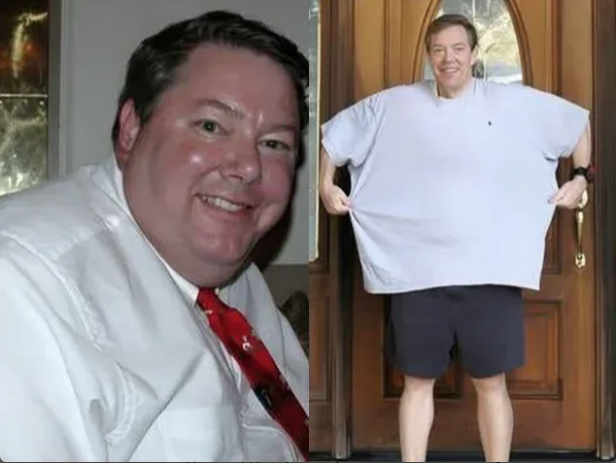
The wedding in 2006 was beautiful. He spent the whole night taking photos—capturing moments, documenting joy, doing what photographers do. Click after click, frame after frame, preserving memories for people he cared about.
The next day, he was reviewing the images when one stopped him cold. His wife Mary was standing next to a man he didn’t recognize at first. He had to ask her: “Who’s this guy?”
She said three words that shattered his comfortable denial: “That. Is. You.”
He weighed 318 pounds. But he’d been telling himself he wasn’t “that big.” He’d convinced himself the number on the scale didn’t really reflect reality, that he carried it well, that it wasn’t as bad as people thought. We’re all experts at lying to ourselves about the things we don’t want to face.
But that photo didn’t lie. It showed him exactly what he’d been refusing to see: a man who’d let his health spiral so far out of control that he couldn’t even recognize himself in a picture.
That painful photo woke him up. At forty-five years old, he finally saw a doctor. Then he made a decision that seemed impossible: he would run the Boston Marathon for his niece Julia, who has Cystic Fibrosis.
His wife Mary cried when he told her. Not because she doubted him, but because she knew how hard it would be. “I’ll have a friend at every mile,” she promised. She understood he’d need support, encouragement, reasons to keep going when his body screamed to stop.
In ten months, he lost 125 pounds. In ten months, he transformed from the man in that wedding photo into someone completely different. He finished all 26.2 miles of the Boston Marathon—every painful, grueling, triumphant mile.
The transformation photos are striking. On the left: a man in formal wear, face round, body filling out a white shirt that’s stretched tight. On the right: the same man, now lean and fit, holding up that massive white shirt like a trophy, like proof that the impossible actually happened.
That painful photo showed him who he could become. Not by shaming him, but by showing him the truth he’d been avoiding. Sometimes we need to see ourselves clearly before we can change. Sometimes denial is the biggest obstacle, and clarity—even painful clarity—is the beginning of transformation.
He didn’t do it for vanity. He did it for Julia, his niece whose disease makes every breath a struggle. He did it to prove that when someone you love is fighting for their life, the least you can do is fight for yours. He did it because that photo made him realize he was wasting the health Julia would give anything to have.
Losing 125 pounds in ten months isn’t easy. It’s not a quick fix or a magic pill. It’s waking up every day and making choices that feel hard when you’re tired. It’s running when your body hurts. It’s saying no when you want to say yes. It’s showing up for yourself even when no one’s watching.
But he did it. With Mary supporting him at every mile, with Julia inspiring him, with that wedding photo reminding him why change mattered, he did what he’d thought was impossible.
Now he stands in that enormous white shirt, transformed and proud, proof that it’s never too late to become who you’re capable of being. That painful photos can be catalysts instead of condemnations. That love—for others, for yourself—can motivate you to do hard things.
He weighed 318 pounds and told himself he wasn’t “that big.” A photo showed him the truth. And that truth set him free.